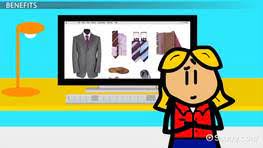“B2C” (business to consumer) has been firmly ingrained in our digital lexicon for the past two decades. But with major developments in the industry, various types of e-commerce have been emerging at the forefront of the global e-commerce space.
The global economy is shifting from “business to consumer” (B2C) to “customer to business,” or C2B, and this blog will walk you through all the major aspects of this shift from B2C to C2B.
Transition from B2C to C2B
The C2B segment has fundamentally altered the typical business-to-consumer concept. There exist 4 types of e-commerce B2B, B2C, C2B, and C2C. When business decisions are controlled by machine learning via feedback loops, the consumer can eventually influence the firm’s behaviour. However, it is not a quick process. When a company begins to retool any given activity, it must retool all aspects of its operations, from branding to product design to manufacturing.
Firms can only build products and services in collaboration with users once processes are functionally separate but easily and automatically interconnected. As a result, the entire company’s operating strategy is based on network coordination and data intelligence.
Once established, a C2B-focused company has a significant competitive advantage. The Internet allows for direct interaction with large numbers of customers in real-time. Every major Internet company already serves billions of users every day. These creative practices are permeating the entire economy.
Technological Platforms to Enable Evolution in The Business
Marketing automation, CRM, and digital commerce platforms are all vital in today’s business landscape. Digitisation of human labour is possible by leveraging a slew of new IoT technologies, SaaS platforms, and AI processing capabilities on the cloud. Of course, in practice, most businesses would take it gradually, beginning with digital marketing and sales and then moving on to CRM.
Some challenges must be overcome before businesses can attain a higher level of personalisation. A C2B model achieves mass customization by default. Understanding the essence of the C2B model is a challenging initial hurdle for many people since it needs sound knowledge and expertise with the basic functions of the Internet.
As part of digital transformation, on-demand product development and manufacture, in which the consumer participates actively, is also possible. However, in most cases, these innovations are still in their early stages. These innovations are concentrated in a few industries, such as fast fashion and home decoration.
Companies must first construct on-demand marketing, then enable direct access to customers, and finally develop an online community with customers for on-demand product development to take root. Only then can you begin the process of involving customers in product development.
Furthermore, greater digitisation is required. You must also shift the in-house development process online, which is a difficult operation that demands domain knowledge.
Methods for a Stable C2B Approach
Move as many steps as feasible in your whole supply chain online. This is the cornerstone for the C2B model and any savvy firm. Many steps in conventional sectors are still performed by humans, thus businesses find it difficult to completely switch to automation.
For example, in the fashion industry, textile inspection is still done manually rather than by machine, and it is the bottleneck for putting procurement online, thus this section of the supply chain cannot be made customer-driven since data cannot flow through the entire chain.
Role of Technology in E-commerce
Over the last few years, e-commerce has been one of the most critical drivers of the courier services business. E-commerce has flourished with retailers shifting their sales to the Internet, even if they maintain physical locations. E-commerce, particularly B2C has aided the growth of the courier business. However, C2B has recently aided the courier and logistics industry’s growth. C2B companies are associating themselves with leading shipping aggregators like NimbusPost to ensure the fastest courier service in India to enhance delivery speed and increase the overall experience for consumers.
Conclusion
It makes sense to position your firm towards utilising the customer as a resource in an era when technology has democratised creative output and consumers have more power than ever.
C2B type of e-commerce is expected to take exponential growth in the future. After all, the customer is king, and making their views needs recommendations, and pain points as a priority will only help your business grow endlessly.








